The Common Core says that third graders are expected to be able to "apply properties of operations to multiply and divide", which includes the Distributive Property (3.OA.B.5). The idea of the distributive property is HUGE in developing a deep conceptual understanding of multiplication for kids, but if you are anything like me, you didn't "learn" the Distributive Property until middle school (FOIL, anyone?). What might this look like in 3rd grade?! So the following is my experience introducing distributive property to 8 and 9 year old kiddos.
We developed a context for this idea through area problems, which seemed like a natural starting point. I created rectangular "brownie pans" with tape on each of my tables with various dimensions. One of the important pieces in getting students to think about and eventually use the Distributive Property is creating a need to break apart your factors, so I intentionally made the dimensions of the "brownie pans" large enough to do just that. I posed the following problem, and let them get to work:
"Your
busy teacher was asked to bake brownies bites for an upcoming bake sale. Because she is so busy, she only has time to
bake one batch of brownies. She needs
your help in deciding which cookie sheet to use that will allow her to make the
most brownie bites in a single batch. Use
everything you know about finding area to figure out how many 1-square inch
brownie bites she can make if she uses the baking sheet outlined on your desk. As we know, things don’t always turn out how
we expect them to, so be ready for anything!
Attend to precision, and be prepared to share your findings with the
class!"
Five of six groups began tiling their rectangle almost immediately, as tiling to find area is one method that students had been exposed to. After spending five minutes furiously tiling their area, it quickly became apparent that counting their tiles, or even repeatedly adding their rows or columns, would not be an efficient way to find the total area. Thankfully, they also had been exposed to an area model for multiplication, so multiplying it would be...if they only knew what to do with these big numbers. The final group measured their dimensions with a yardstick, and were immediately stuck with two numbers too large to multiply using strategies they had previously learned. This "stuckness" was exactly what I was hoping for, because it created a need to try something new.
As I made my way from group to group, I heard numerous, "I don't know how to skip count by 19's!!" and "We haven't learned how to multiply big numbers yet!". But I also heard, "Ok, let's cut the pan in half, and you do that side, and we will figure out this side", and "Let's take out the 10 x10 piece, because that's 100 brownies, then we can solve what is left". Problem solvers in action! Not all groups were so logical in the ways in which they broke-apart their area, so I had to be mindful in questioning students to get them to think about meaningful ways to break-apart their dimensions (landmark numbers, tens, fives, etc.).
Students used rulers to "cut" the brownies into chunks, post-it notes to keep track of the area of each part, and worked together to present their findings on their recording sheet. All groups had a chance to share their work, and we discussed the ways in which they chose to break-apart their large area or dimensions into smaller pieces. We also talked about how this idea of taking large factors and decomposing them into smaller parts, multiplying, then adding all the parts back together, can be used to multiply bigger numbers.
We have since used the Distributive Property time and time again in many different instances, most recently in finding the area of a football field.
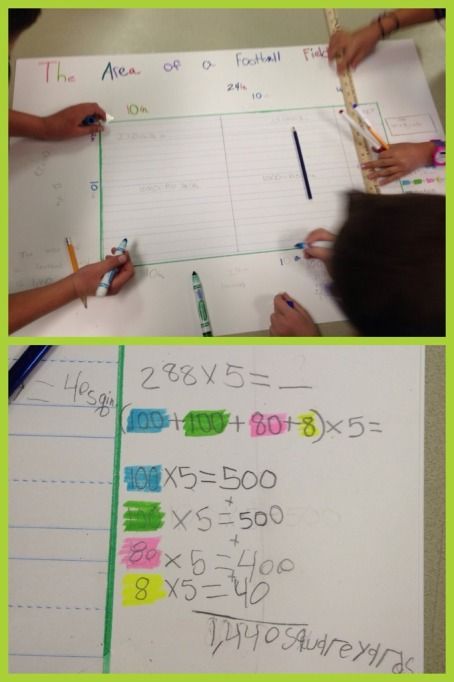
Happy Weekend!
As I made my way from group to group, I heard numerous, "I don't know how to skip count by 19's!!" and "We haven't learned how to multiply big numbers yet!". But I also heard, "Ok, let's cut the pan in half, and you do that side, and we will figure out this side", and "Let's take out the 10 x10 piece, because that's 100 brownies, then we can solve what is left". Problem solvers in action! Not all groups were so logical in the ways in which they broke-apart their area, so I had to be mindful in questioning students to get them to think about meaningful ways to break-apart their dimensions (landmark numbers, tens, fives, etc.).
Students used rulers to "cut" the brownies into chunks, post-it notes to keep track of the area of each part, and worked together to present their findings on their recording sheet. All groups had a chance to share their work, and we discussed the ways in which they chose to break-apart their large area or dimensions into smaller pieces. We also talked about how this idea of taking large factors and decomposing them into smaller parts, multiplying, then adding all the parts back together, can be used to multiply bigger numbers.
We have since used the Distributive Property time and time again in many different instances, most recently in finding the area of a football field.

So there you have it, my experience introducing 3rd graders to the Distributive Property. The DP is a huge concept, and this lesson just scratched the surface. I am very pleased with how my students responded to that scratch.
Happy Weekend!


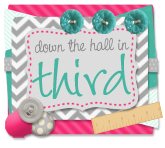
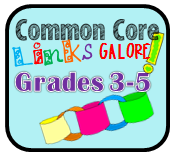











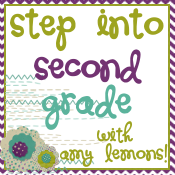
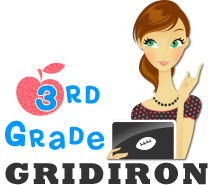











No comments:
Post a Comment